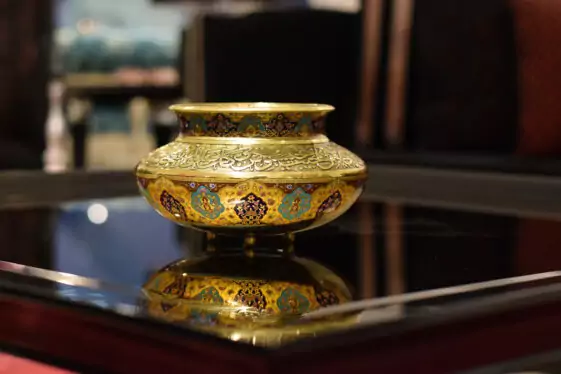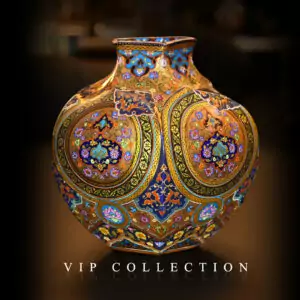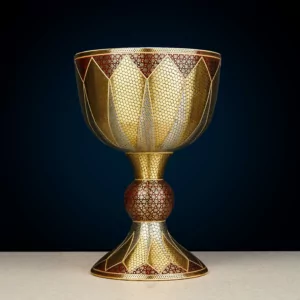Handicrafts Are Increasing in Popularity in Iran and the World
Iran is the third country producing handicrafts in the world. Today’s economists consider the future of the world economy to be dependent on arts and crafts. They believe that a huge amount of trade and commerce in the future markets of the world will be captured by handicrafts and traditional arts. These items are finding a special place in the interior design for luxury decoration throughout the world. In this article, we are going to explore the position of handicrafts in Iran and the world.
What Are Handicrafts?
In general, handicrafts can be defined as the use of art by people’s hands through basic tools and native materials that produce an art industry. Iranian handicrafts are a collection of artistic and traditional crafts that are produced with a focus on creativity, taste, and aesthetics and using available raw materials.
Also, the process of making and producing these products is done individually or in groups, mostly manually and with the help of the required tools. There are 295 disciplines and sub-disciplines of these industries and arts in Iran, excluding carpets and rugs. The approved fields of handicrafts include:
- Traditional textile
- Traditional clothing
- Traditional prints
- Traditional tile
- Pottery and ceramics
- Leather crafts
- Traditional arts related to architecture
- Metal crafts
- Wooden and wicker crafts
- Marine crafts
- Stone crafts
- Bone crafts
- Traditional embroidery
- Glassworks
- Paper crafts, traditional drawing, and painting
- Traditional instruments
- Enamels
The Importance of Iranian Handicrafts in the World
According to a report by Globe News Wire, the value of the global handicrafts market reached more than $466,720 million in 2020 and is expected to reach $847,730 million by the end of 2027.
Iran, having a strong potential from the past centuries until today, is one of the largest and most famous exporters of handicrafts, and the identity of any country can be found in the layers of culture and history of that ancient civilization. This identity is part of an ancient story of connections between art and it expresses the civilization of the people of that region.
With its rich and deep civilization, Iran is considered one of the founders of cultural and historical civilization among all the countries of the world. This manifestation of Iranian civilization can be found in the art left by Iranian ancestors in historical works such as tombs, mosques, palaces, and many other such works, but in these historical works, works of art play the main role. Iran’s handicrafts, as an independent and indigenous industry, have had deep roots in the rich and fertile culture of Iran and this is why they are famous throughout the world and have high value.
Handicrafts of Isfahan
Isfahan is famous to have contained half of the world in itself. It is the cradle of arts and crafts in the center of Iran. Isfahan people in the past centuries, with great creativity and intelligence, made the necessary tools of life with their hands and art. Today, this city is known as the largest producer of handicrafts in Iran. Its markets are full of Iranian travelers and foreign tourists most of the year. They consider the handicrafts of this city as souvenirs for their loved ones or keepsakes.
The Importance of Handicrafts in Isfahan
Isfahan is one of the largest production centers of various types of handicrafts in Iran, whose traditional arts and crafts are world-famous. The products of this city are always exported to other countries, especially European countries.
This province has been the cradle of beautiful arts and delicate industries since the distant past, and there are many works such as brick decorations, tiling, plastering, and all kinds of calligraphy in the historical works of Isfahan from about centuries ago to the contemporary period, on the sides of the minarets and inside.
Outside the mosques, palaces, and arts of gold embroidery and pen work, cashmere and silver work, gilding and writing of various types of Quran books, miniature pieces, and paintings all testify to the artistic centrality of Isfahan.
Different cities of Isfahan province have important handicrafts, but Isfahan and Kashan are two big and important poles of the province’s handicrafts, which have tilted the most weight of handicrafts in the region.
Handicrafts of Isfahan and Kashan include many products, the most important of which are carpet weaving, inlaying, miniatures, enameling, pen work, tiling, all kinds of embroidery (crocheting, needlework, tapestry, spring embroidery, and Jourdozi), turquoise cutting, inlay work, and pottery.
In general, the designs and role of most Isfahan handicrafts, such as carpets, utensils, tiles, and stitching on fabric, are influenced by the decorative designs of the Safavid period, and the designers of Isfahan, according to their understanding and skills, have adapted old works and made them more beautiful with their creativity.
The Importance of Handicrafts in Tourism
All the countries of the world believe in the mutual influence of handicrafts and the tourism industry. In practice and experience, they have found that handicrafts are one of the most effective factors in attracting tourists in all national, regional, and domestic trends. Also, they have mutually concluded that the tourism industry can help the growth, development, and expansion of handicrafts and improve their quality.
Studies of the last three decades of the 20th century until today have brought up the fact that buying souvenirs is a lasting memento with an identity that also carries signs, and symbols of the country or the place of the visit, not only complements the trip. The visits of tourists sometimes create an attraction beyond historical and ancient places in tourists.
Tourists’ wonderful reception of handicrafts and their continuous and impressive demand for such cultural products have caused countries with rich and brilliant cultures and civilizations to be continuously attracted by historical monuments, different climates, beautiful landscapes, and local customs.
Tourists are there to travel and visit, and at the same time, they see diverse and distinctive handicrafts. In the visit plans of foreign tourists, they should also foresee a visit to production complexes, exhibitions, and craft stores, and it is obvious that the successes achieved by this route in countries such as Iran.
Aghajani Introduces the Handicrafts in Iran to the World
Aghajani Handicrafts Company started its activity in 2005 as the largest production line of turquoise-painted products (Firoozeh Koobi) in the Middle East. Efficient management, creativity, and innovation in gathering a collection of master artists, designing diverse infrastructures, and providing high-quality products have made Aghajani Handicrafts Company a luxurious and unrivaled collection in the field of handicraft production and distribution. You can purchase your desired exquisite handicraft directly on the Aghajani online store.












